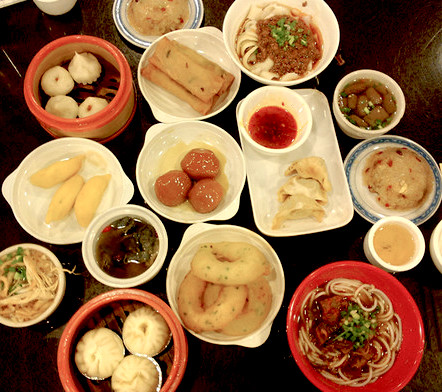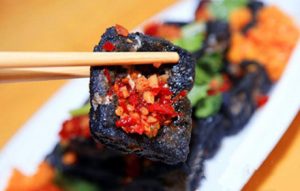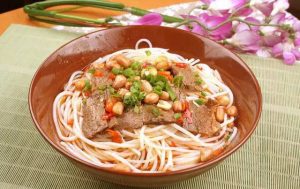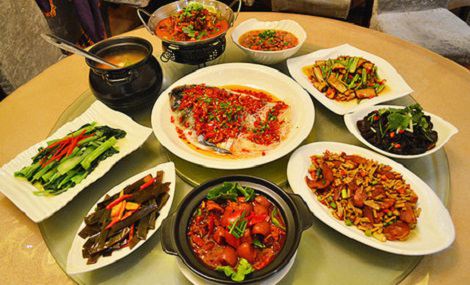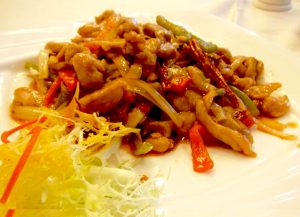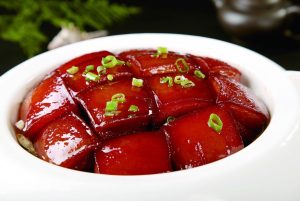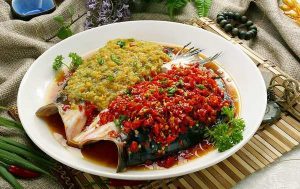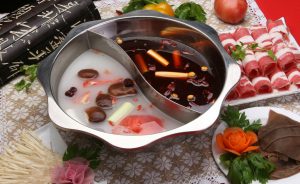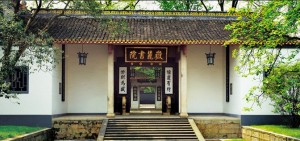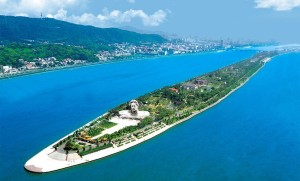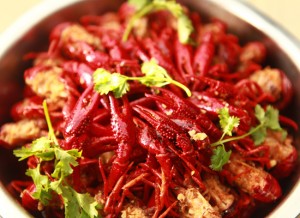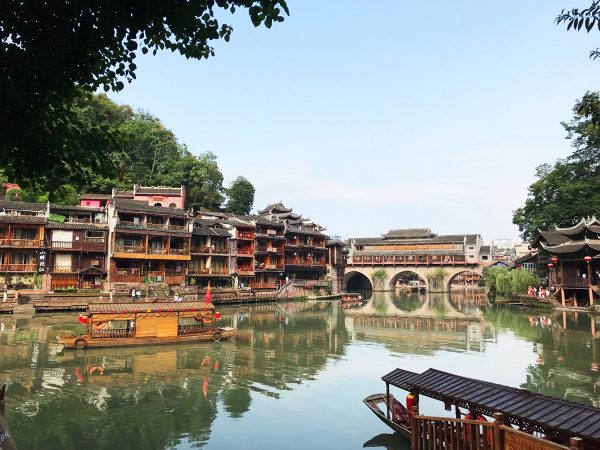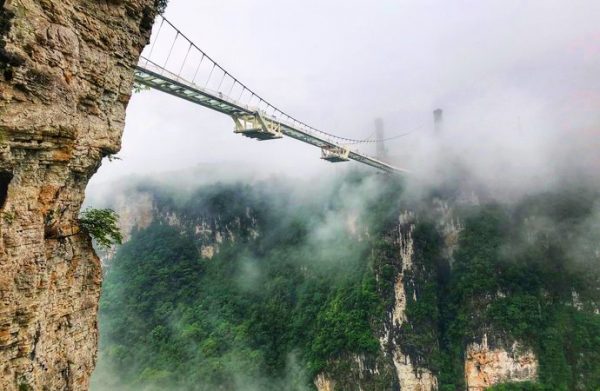
Covering a colossal area of 60 square kilometres (23 sq. mi), the Zhangjiajie Grand Canyon is a startling natural wonder that is begging to be explored by nature lovers and thrill seekers alike. The canyon is arguably most well-known for the Zhangjiajie Glass Bridge, which crosses its vast chasm, yet there’s so much more on offer in this verdant paradise! In order to make the most out of your trip to the Zhangjiajie Grand Canyon, you should aim to hike either from the bottom to the top, or vice versa. Be forewarned, however, that this is no easy feat!
As you climb either away from or towards the glass bridge, you’ll need to navigate your way through an area known as the “Strip of Sky.” This valley is so narrow that only one person can pass through it at a time and, as you look up, you should only be able to see a thin sliver of sky, which is how the area got its unusual nickname. The valley itself is over 700 metres (765 yd.) long and leads to the Sky Ladder Plank Road, which is a planked walkway that is supposedly so steep it appears as though you’re walking up into the heavens! In fact, this stairway to heaven is made up of over 1,600 stone steps, which should give you some idea of just how steep it truly is.
From the walkway, you should be able to see the South Red Flag Canal, which is about 1 metre (3 ft.) deep and 1 metre (3 ft.) wide. It took the local people over seven years to excavate and the endeavour cost many of them their lives, but it now provides valuable drinking and irrigation water to eight nearby villages by directing spring water down from the towering cliffs. Once you reach the top of the Sky Ladder Plank Road, however, you’ll be greeted by arguably the most famous attraction within the scenic area.
The Zhangjiajie Glass Bridge, also known as the Zhangjiajie Grand Canyon Skywalk, stretches for 430 metres (1,410 ft.) in length, 6 metres (20 ft.) in width, and a staggering 300 metres (985 ft.) in height, which makes it the longest and tallest glass bridge in the world! In fact, during its construction, the bridge ended up setting ten world records. This engineering marvel was designed by celebrated Israeli architect Haim Dotan and can carry up to 800 visitors at a time. Unlike the glass bridge at Tianmen Mountain within Zhangjiajie, which is embedded directly into the cliff-face, the Zhangjiajie Glass Bridge spans the sprawling valley of the canyon itself.
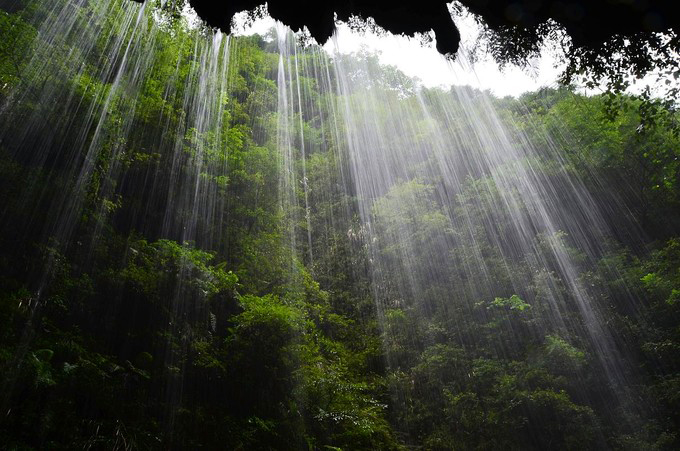
In order to build this spectacular bridge, engineers had to first embed four support pillars into the walls of the canyon on either side. The bridge itself consists of a metal frame and over 120 glass panels, which are each 3-layered and made up of 5-centimetre (2 in.) thick slabs of tempered glass. You may be surprised to hear that, at its centre, there is even a specialised 285-metre (935 ft.) high bungee-jumping platform. What attracts most visitors to the bridge, however, is the panoramic view of the surrounding mountains and the experience of walking as though you are among the clouds.
On the other side of the canyon lies a pair of unusual rock formations known poetically as Barrel Cliff and Flying Fox Rushing Downhill. Barrel Cliff is a completely cylindrical cliff that looks so perfect in shape that it’s hard to believe it was not carved by human hands. To this day, no one can explain why it is the only cylindrical cliff in the area and why, unlike the other mountains in the area, no trees grow on its sides. By contrast, the Flying Fox Rushing Downhill refers to a particular landscape rather than a rock formation. It is made up simply of a waterfall and a large rock jutting out from the cliff-face. When the water cascades over the rock, it sprays out and forms a cover, which is said to look like a fox running down the cliff. Much like its cunning counterpart in real life, it may be hard to spot this slippery water-fox!
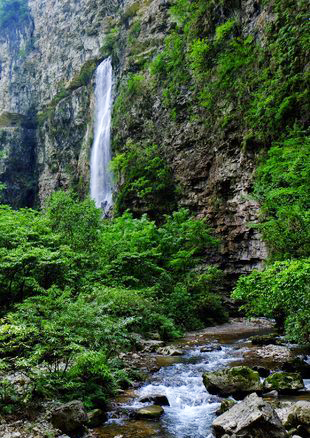
The next highlights along the hiking route are the Pearl Wall and the Butterfly Spring Waterfall, which give the area an ethereal quality. The Pearl Wall is another cliff-face where a crystal clear spring slowly flows down the rock-face, upon which many plants are growing. The lush green plants are regularly covered in small droplets of water, which are said to look like pearls and have lent the attraction its delightful name. Unlike the previous attractions, however, the Butterfly Spring Waterfall is not simply a poetic name. For unknown reasons, this particular waterfall attracts the attention of hundreds of butterflies, which can frequently be seen dancing about in the misty air. The nearby Swallow Cliff is similarly home to thousands of cliff swallows, who choose to nest directly on the cliff-face. They are smaller than regular sparrows and can often be seen flitting around the cliff-face as they gather food for their young.
The end of the canyon is marked by a large reservoir, which you’ll need to cross by boat. As you float leisurely across the reservoir, you may spot a few ducks bobbing on the water or even a handful of snow-white egrets flying above you. After a long day of hiking and conquering your fears, the final boat ride makes for an ideal end to an exhausting yet rewarding trip.
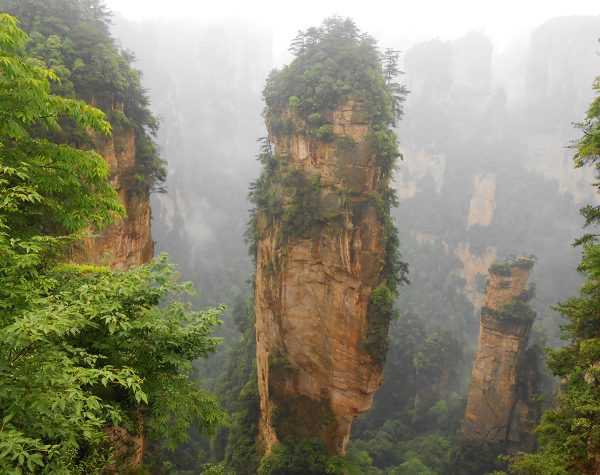
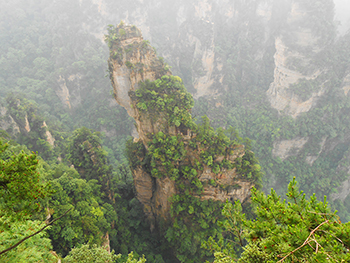
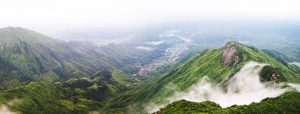
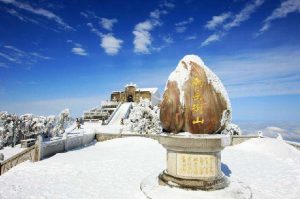
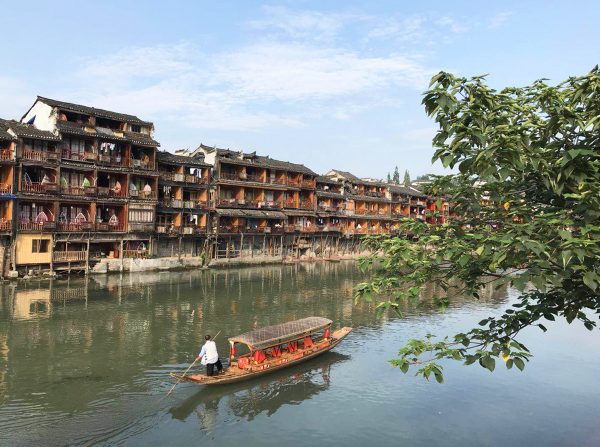
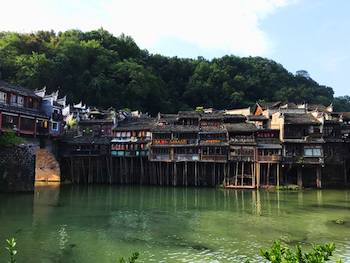 Its most unique feature is undoubtedly its wooden
Its most unique feature is undoubtedly its wooden 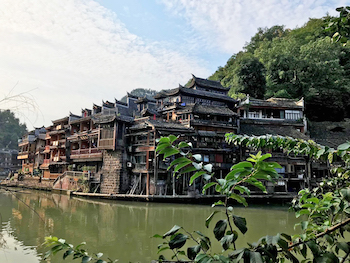 The former residence and tomb of the renowned Chinese writer Shen Congwen is arguably the most popular site in the town. In fact, his novel The Border Town, a romance written in 1934 and set in Fenghuang County, is believed to be what catapulted Fenghuang Ancient Town to national fame. It appears that Fenghuang’s residents were truly blessed with good fortune, as it was also the hometown of Xiong Xiling, who was once the premier (1913-1914) of the Republic of China (1912-1949) , and Huang Yongyu, a celebrated painter in the traditional Chinese style.
The former residence and tomb of the renowned Chinese writer Shen Congwen is arguably the most popular site in the town. In fact, his novel The Border Town, a romance written in 1934 and set in Fenghuang County, is believed to be what catapulted Fenghuang Ancient Town to national fame. It appears that Fenghuang’s residents were truly blessed with good fortune, as it was also the hometown of Xiong Xiling, who was once the premier (1913-1914) of the Republic of China (1912-1949) , and Huang Yongyu, a celebrated painter in the traditional Chinese style.